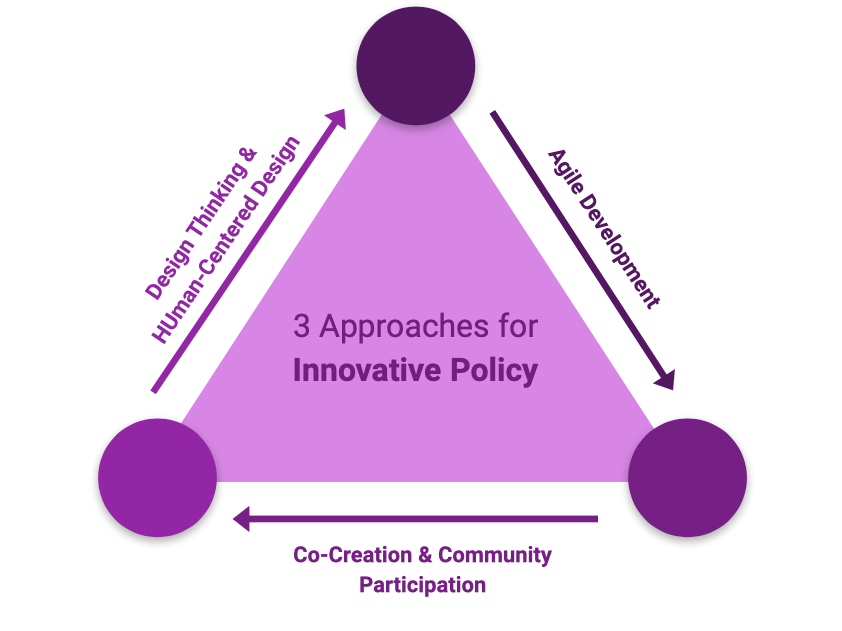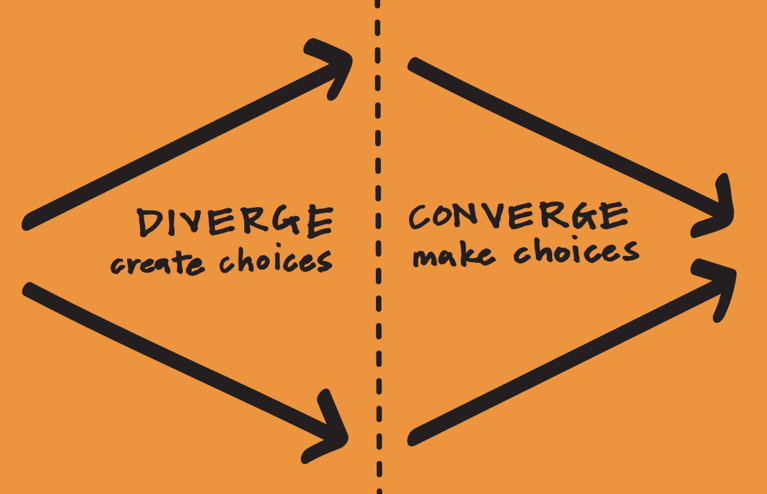How to create an ‘Innovative’ national innovation strategy

Advice for Making Your Strategy Stand Out
Over the past few years, innovation has become a popular term in the public and private sectors. Many are beginning to look for ways to make their company or unit more innovative, wanting to offer a service, product, or policy that is different and more creative than what currently exists. But when everyone else also tries to think ‘differently,’ how does one actually do so? This challenge can be even harder in the public sector, where existing rules and bureaucracy can make it more difficult to change the status quo.
For any government, the first major step is to commit itself to innovation, for example, using the OPSI’s Declaration on Public Sector Innovation. But, after doing so, what comes next? How can a public sector entity or agency move from declaration to action? As many readers will likely attest, this can be both difficult to initiate and sustain. In the past, policymaking has been less innovative than the private sector, given legal frameworks, bureaucracy, and the fact that getting something wrong has high costs, both social and financial.
In this article, I will outline one way in which governments can start thinking about crafting an innovative innovation policy. To do so, lessons from the private sector can be adapted and applied in the public sector space. I will explain how Paraguay, who is currently executing their National Innovation Strategy, has been able to put this into practice. The Strategy’s operating team, housed in the Presidential Delivery Unit, has been taking a unique approach to their innovation efforts. Lessons from executing this innovation strategy in Paraguay can be useful for other governments and/or agencies who are also looking to refine or begin their own innovation efforts.
Some Context: What has Paraguay Been Up To?
In August 2019, Paraguay’s president Mario Abdo Benítez, passed National Decree 2314, which has two main objectives:
- To identify national challenges in Paraguay and select two to create initiatives specifically designed to address the selected issues.
- To create a new government entity that will be responsible for leading these initiatives and coordinating all of the country’s innovation efforts in the future
This innovation unit will play an important role in coordinating innovation efforts for the country in a strategic and cohesive manner, as public sector innovation initiatives have been fragmented across government ministries.
Lessons from the Private Sector
Over the past few years, an increasing number of groups have begun thinking about integrating private sector practices into the public sector. This has been particularly visible in the digital service sector. A prominent example is the U.S. Digital Services (USDS) team, which is a small group of private sector technologists hired to work in the U.S. Federal Government to develop technical solutions for some of the nation’s largest challenges. This has been adopted by other countries as well, such as Canada, who recently launched their own Canadian Digital Services team.
There are several different ways in which private sector lessons can be integrated into public sector operations. One area where this can be particularly relevant is with design methodologies.
Three examples of these private sector approaches include: Agile Development; Co-Creation & Community Participation; and Design Thinking & Human-Centered Design. These approaches have been key components of Paraguay’s innovative innovation strategy.

Agile Development
Agile Development originally grew out of the software industry and has often been associated with frameworks like Scrum and Feature Driven Development (FDD). This phrase was coined to describe a new type of methodology and mindset for developing software. However, given its success in the industry, this approach has been applied in projects and teams outside the technology field. For example, a growing number of people now participate in the ‘Business Agility Movement,’ which has developed a set of twelve principles outlining and promoting the adaptation of this methodology in various industries.
The approach is designed to encourage management that is responsive to ambiguity and unpredictability. Teams are asked the question:
“How might we structure and operate our organization in a way that allows us to create and respond to change and deal with uncertainty?” – Agile 101, Agile Alliance
This question helps teams be forward thinking and plan how they can be responsive and adaptative to changes as they occur. This is particularly relevant in the public sector, where policy must address a complex and ever-changing ecosystem. Policy’s purpose is to improve lives, requiring policymakers to be constantly aware of what is happening on the ground and forecast how different stakeholders or population segments will (and are) affected.
The National Innovation Strategy in Paraguay is doing this by being observant and making quick changes as it executes the Strategy. Constantly looking for ways to update its approach and methodology has been key. The team is feedback driven, asking participants for their thoughts, suggestions, and questions after every workshop is held. The unit has led several types of workshops around the country aimed at gathering input from the public, subject matter experts and government leaders. Facilitating these workshops has brought the team closer to citizens in the country, allowing them to talk with people about the most prudent issues to them. Additionally, the methodology for these sessions has been constantly refined based on feedback from workshop participants.
Another component of the Agile methodology is collaboration and cross-functional teams. These two pillars encourage the diffusion of knowledge and allows for the cross-pollination of ideas. The structure of the Innovation Operating team in the Presidential Delivery Unit is such that each member is focused on a specific topic or objective; but, at the same time, everyone works closely with the other units in the team as the work is closely intertwined. Getting constant feedback and working in lockstep allows for rapid response and cohesive Strategy evolution.
The Agile Methodology also has a focus on project goals and principles. From the beginning, the Strategy has been clear about its objective. The team has had a clear answer to the question ‘What Do We Want to Achieve?’ Their response has been ‘To use innovation to accelerate inclusive and sustainable development in the Paraguay.’ Furthermore, the operating team agreed upon a common definition for innovation:
‘to innovate is to convert knowledge and creativity into improved well-being, financial resources, and a better future for citizens.’
Having clear definitions is not only useful for the team but also necessary for conveying to others the main objective of the Strategy. At the same time, each team member’s deliverables correspond directly to a component of the mandate outlined in Presidential Decree. This makes it clear the purpose of each person’s work and how it contributes to the larger objective.
In the private sector, and particularly in technology, products normally have fast timelines, with the aim of developing of a ‘minimum viable product’ (or MVP) to test and prototype. In contrast, public sector timelines generally tend to be much longer. In Paraguay, the team is dedicated to iterating and moving quickly in order to ‘test’ their ideas in the community more frequently and getting significant input from different stakeholders in the community. Therefore, this National Strategy has a shorter timeline than other public sector strategies have had in the past. The decree, passed in August 2019, was officially launched at the end of October 2019. By May 2020, the intention is that the new governance unit will be signed into existence by the president, alongside the selection of the two national initiatives. While this timeline may seem fast, the benefit is that things can be tested more frequently in the public and this feedback is used to make continual improvements to the Strategy.

Community Based Co-creation
Given the National in National Innovation Strategy, the team knows that to be successful, the Strategy must have broad support from across the government and in the community. For a new governance entity to effectively work with other ministries and secretariats in the future, this unit will need to be accepted and embraced by existing government leaders. At the same time, the team must also engage the public in order to get community buy-in and interest.
Co-creation has been a fundamental component for development of the strategy; decisions about the strategy would be chiefly made by others, not unilaterally by the operating team. To ensure this, an Equipo Impulsor (Driving Team) was established to serve as an Executive Board. Eighteen individuals were selected from the civil society, private sector, academic and scientific community through an open application process in 2019, which solicited nearly 180 applications. This marks the first-time entities from all of these sectors have come together to discuss national-level challenges. This team also includes seven ministers from various portfolios within the government. This group will make the ultimate decisions on important topics, like selecting the final two challenges and choosing the governance structure for the new innovation unit. Providing space for community representatives to participate in the government’s decision-making process is an important step for the government. Bringing all of these players to the table helps garner greater support and aligns the interests of these actors, which will be necessary for the successful implementation and execution of the strategy.
One of the most important stakeholders in any government strategy are the people, yet oftentimes this group can be the hardest to integrate into the decision-making process given its size and diversity. The Paraguayan operating team has consistently repeated that this strategy is the strategy of everyone; anyone interested in getting more involved can volunteer or help the team in any way they wish. The intent is to emphasize that this Strategy is being done with the community and by the community. To further ensure that this Strategy is grounded in people’s input, national challenges will be selected from an analysis of community input. While it might be easier or faster for the government to select what it sees as the largest national challenges, Paraguay is instead using a bottom-up approach by gathering initial input from the community through public workshops.
Using a grassroots approach for an innovation strategy is important. This is very much the case in Paraguay. Before the Strategy was officially signed into existence with the August 2019 Decree, there was roughly a year-long process in which community members self-organized chats and panels to discuss amongst themselves what they believed innovation could look like for their country. These individuals also researched and spoke with leaders from innovation units in other countries, like Chile, Colombia, and the Basque Country, to better understand what had been successful elsewhere and how this could be adapted to Paraguay. After several rounds of discussions, these community members presented their ideas for a national innovation strategy to government leaders and the president, thereby compelling the government to create the Presidential decree. This community-based approach has carried over into the sourcing of challenges for the country, as mentioned above. The team has led 10 identification and 6 expert workshops around the country, speaking with 285 unique participants to surface over 390 opportunities to innovate for the country.
This approach also parallels a trend that is being seen in other governments around the world—increased engagement of the community in policy making. This is captured in the OPSI 2019 Report, which writes about Trend Two – ‘Opening Doors’ for the public. This document provides an in-depth overview of this trend along with illustrative examples.
Human-Centered Design & Design Thinking
Two approaches to design that have become popular over the past few years are Human-Centered Design (HCD) and Design Thinking. The first references to Design Thinking emerged in the 50’s and 60’s, sparked by a desire to bring a more scientific approach to the design fields. Architects, engineers, and professors alike began to think more deeply about design methodology and how these challenges could be solved using a more creative and collective problem-solving approach.
HCD has also been commonly used in conjunction with Design Thinking approaches. The seminal work: Architect or Bee? The Human/Technology Relationship by visionary, Mike Cooley, laid a foundation for the initial thinking in this field and was influential in kickstarting work in this space.
HCD has evolved significantly over time, and people have created many different processes and diagrams helping people to utilize this approach. Dr. Don Norman, a Professor at the University of California, San Diego, and director of the school’s Design Lab, summarizes four main concepts of HCD as:
- Root Problem: ensure that you are solving the core, underlying issue and not just the surface level symptoms.
- People: focus on the users who will use the product or be affected by the strategy.
- Systems Perspective: acknowledge that challenges are interconnected and that one must have a broad systems perspective to fully understand the context.
- Test & Refine: test and adapt your product or project to ensure that it fulfills the needs of the intended user.
Paraguay is also incorporating these principles into the execution of its strategy. As mentioned in the previous section, the focus is on creating a Strategy with and for Paraguayans. Given that the fundamental purpose of policymaking should be to improve the quality of life for the community, understanding from them what their greatest challenges are is the first way to be people-focused (HCD Principle 2). At the same time, the team is trying to address HCD Principle 1—addressing the root problem—by having meetings with experts from Paraguay. Analysis of workshop responses thus far have surfaced six major themes about challenges facing the community. Therefore, to better understand the core problem behind these thematic areas—such as social protection and inclusion—the team lead workshops with 110 experts to better understand each of these issue areas in greater depth. This holistic perspective allows the team to have a more systems-perspective to see how one challenge might be connected with other issue areas. One of the objectives for selecting a national challenge is that it will be transversal and touch upon several different social, environmental, and economic segments in the country. This feeds into HCD Principle 3, that it is necessary to tackle things at a systems-level and maintain a broad perspective. Using this approach, alongside the Agile Methodology, has helped the team fulfill HCD Principle 4, test and refine.
Another type of methodology that has become popular in recent years is Design Thinking, which gained much visibility with the rise of IDEO and the work of its founder, David Kelley. While there are many ways to ‘do’ design thinking, it is fundamentally an approach to use HCD and integrate creativity into problem-solving. IDEO, for example, focuses on fostering highly collaborative environments where teams with a diverse background are encouraged to generate new solutions and think ‘outside the box.’ This has been a key component in the structure of workshops and brainstorming sessions with community members.
Design Thinking also uses the idea of Divergent and Convergent thinking. The graphic below shows how the first step in this approach is to collect as many ideas as possible to ‘create choices,’ and the second part is to eventually converge and to ‘make choices.’ The Innovation Strategy has adopted this approach by leading multiple workshops and getting input from the community, creating a divergence of different responses. Through rounds of analysis, the team has begun to see convergence, in which major themes have surfaced. Once more narrowly defined, the Innovation team is now leading meetings with experts to dig deeper into each topic. Discussions with experts in this thematic area has then led to another round of divergence, but at a more specific level, such as a divergence in the priority areas of environmental issues in Paraguay. Implementing this approach can help any policy or strategy remain grounded and based on community input.

These strategies have been incredibly useful for laying a strong foundation for the National Innovation Strategy in the country. The Paraguayan team will continue using these approaches as it begins Phase Two, with the creation of a new Ministerial Unit of Innovation. The Driving Team will also soon select the two challenges and the country will create new initiatives for addressing these challenges.
While creating an Innovation Strategy is never easy, using principles from the private sector can be effective for approaching policymaking in a new way. Using Paraguay’s National Innovation Strategy as an example, this article demonstrates how Agile Development, Community Co-creation, and Human-Centered Design & Design Thinking are tools that policy-makers can use not only make an Innovation Strategy more innovative, but to also better address the needs of the community and unify key actors in the country.
More information about the Paraguay National Innovation Strategy can be found at the Strategy’s Medium, Twitter, or Facebook pages.
Isabelle Foster is a Fulbright Research Scholar from Stanford University. She is currently doing research in Paraguay and is working with the Presidential Delivery Unit on the National Innovation Strategy and the creation of the new Ministerial Unit of Innovation. You can reach her at [email protected] or via LinkedIn.












